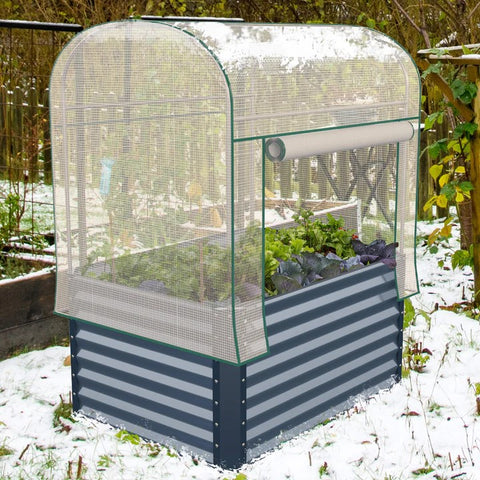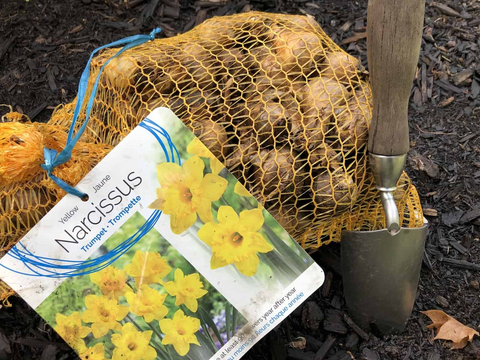Bad weather can wreak havoc on your garden, destroying plants and undoing all your hard work. However, there are steps you can take to protect your garden from heavy rain, severe weather, summer storms, thunderstorms, and downpours. In this article, we explore various techniques and tips to protect your precious plants from the elements and ensure a successful growing season.The following content also has some reference value for raised garden beds.

Ways to protect your garden from the elements
When bad weather comes, it is important to prepare the garden in advance. One effective way to do this is to use row mulch, which is a lightweight fabric that can be draped over your plants. These coverings provide protection against animal barriers, high winds, hail and downpours. With the added advantage of sunlight and air circulation, your plants are protected from harsh weather conditions and potential animal threats.
Another valuable technique is to build a windbreak, a purpose-built structure designed to mitigate the effects of strong winds on your garden. Planting tall hedges or installing fences can provide much-needed wind protection. Placing your windbreak where the wind is strongest will protect your garden from gusts and maintain a favorable microclimate.
In addition, delicate plants may need extra shelter to survive harsh weather conditions. Consider building an expandable cold frame or greenhouse to protect them from extreme temperatures, high winds and heavy rain. These structures provide a controlled environment for your plants, allowing you to extend the growing season and protect fragile leaves.
Keeping a greenhouse cool is another important aspect of gardening. High temperatures can stress plants, leading to lower yields and potentially damaging the plants themselves. A healthy temperature in the greenhouse is maintained by means of shade cloth, proper ventilation and evaporative coolers.
Understanding weather damage
It is vital to understand that bad weather can wreak havoc on your garden. It can turn a lush green landscape into a tangle of broken stems, flat flowers and wind-blown leaves. Summer storms don't discriminate; They can destroy your beloved roses as easily as your cherished tomatoes. From high winds that rip off tree branches to heavy rain that compacts soil and floods roots, extreme summer weather conditions can undo months of hard work in a matter of hours.
Hail is another enemy. These cold projectiles can Pierce plant tissue, leaving holes and bruises that make it easy for disease to invade. Heat waves are also a threat, scorching plants and drying out soil faster than you can say "sprinklers." Let's not forget droughts - those long dry spells where every drop of water becomes precious. During droughts, plants have a hard time retaining water, causing them to go into survival mode, which usually means fewer blooms or fruits.
Understanding these threats is the first step to protecting your little piece of paradise from the whims of Mother Nature. But don't worry! With some planning and some smart gardening techniques, you're well on your way to creating an outdoor oasis that can withstand even the harshest summer weather conditions.
How can plants be protected from thunderstorms
Shrubs: During thunderstorms, shrubs can suffer serious damage because of their dense foliage and weak branch structure. Piling can provide additional support and help prevent breakage. Using strong stakes, tie the bush to the stakes with flowered thread in a figure 8. This will protect them from being uprooted or broken by strong winds.

Create mulch for potted plants: Potted plants are particularly vulnerable to thunderstorms because they can easily be blown down or damaged by heavy rain. Cover the jar with an upside-down bucket or other similar object. This will provide protection against too much water soaking the roots.
- Add a layer of mulch: Adding a layer of mulch to plant roots can provide additional protection during thunderstorms. It helps regulate soil moisture and prevent erosion caused by heavy rains. In addition, it acts as a barrier against strong winds, protecting the plant's roots from potential damage.
Tips for protecting your garden from downpours
- Use buckets for proper drainage: Downpours can quickly flood your garden and cause extensive damage. To prevent this, drill a hole in the bottom of a large bucket or container and partially bury it underground. These temporary drainage systems will help redirect excess water away from your plants and keep them safe from waterlogging.
Set up raised flowerbeds: Setting up raised flowerbeds is an effective way to protect your garden from heavy rains. Raised beds provide better drainage and prevent water from pooling around the plant roots. Make raised bed frames out of bricks, wood or natural stone and fill them with well-drained soil. This will ensure that your plants stay healthy and thrive even in heavy rain. If you plan to build a more long-term and durable elevated bed, metal garden beds may be worth it because they are resistant to decay and pests.

- Apply compost to improve soil drainage: Poor soil drainage can cause problems during heavy rains. By adding compost to your garden bed, you can improve water seepage and soil structure. Composting helps tighten the soil, allowing excess water to drain efficiently. This prevents waterlogging, promotes root growth and makes the plant healthier.
In conclusion, protecting your garden from the elements is essential to keeping your plants healthy and vibrant. By implementing recommended techniques such as using mulch, setting up proper drainage, providing shelter, and taking other protective measures, you can protect your plants from heavy rain, severe weather, summer storms, thunderstorms, and downpours. Remember to keep up with the local climate and consult resources such as gardening yearbooks for additional guidance. With careful planning and proactive measures, you can protect your garden from the worst elements and ensure a successful grow
In bad weather, it's best to move your hanging baskets and containers indoors or to a more secluded area. This will help protect them from heavy rain and strong winds.









